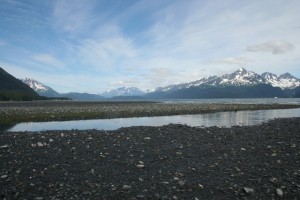Do you read travel magazines? I do. I can’t get enough of them. I love the vibrant descriptions of exotic locales and the strange explanations of unfamiliar customs. But what really makes me want to go places is the photographs, the great ones that are more than just visuals of a scene. They make the smells and sounds come alive, they draw me into the scene and make me feel as if I were there. Most of the time, a really great photograph gets me dreaming about my next trip and about who I’ll meet and what I’ll do once I get there.
 A photograph isn’t always just visual representation of what really exists. Different lighting conditions, different angles, different photographers even, can give the scene a mood that a snapshot just can’t capture. You know that saying, “The photo doesn’t really do it justice?” It’s not always true. A snapshot doesn’t do it justice, but a good photo not only captures the visual elements in a scene, it captures the mood and the drama, too. Good photography is a demanding (and in-demand) skill, and it’s why professional photographers are able to charge the rates they do — it’s an art, and good art is not cheap.
A photograph isn’t always just visual representation of what really exists. Different lighting conditions, different angles, different photographers even, can give the scene a mood that a snapshot just can’t capture. You know that saying, “The photo doesn’t really do it justice?” It’s not always true. A snapshot doesn’t do it justice, but a good photo not only captures the visual elements in a scene, it captures the mood and the drama, too. Good photography is a demanding (and in-demand) skill, and it’s why professional photographers are able to charge the rates they do — it’s an art, and good art is not cheap.
If you’ve read the tips found in the photography principles article or the point-and-shoot technical tips article, you’ve probably learned that a well-composed and well-lighted photograph is light years beyond its snapshot counterparts in visual interest and drama. In a great photo, your viewers can imagine themselves in the scene, as if they were there, and if you’re following the tips, you’re probably taking those kinds of photos already.
It’s these photos you want to build your website around, especially for a tourism-based business like B&Bs. You want your site visitors to imagine themselves in the scenes, to see themselves taking part in the photographs, and to love that feeling so much they make a reservation or a sale at your site. Start with the photograph that best captures your business, or the mood behind your business. Use that as your header or the main site photo so that as soon as people arrive at your site, they’re hit with the visual impact of that photo. They will immediately know what you stand for, or what your business does, or how they’ll feel when they arrive on the day of their reservation. They’ll click deeper into the site because they’ll want more of that photography and that feeling.
Use your photograph to organize the rest of your site as well. Sample the colors in the photo and use them to create the color scheme for your site. Your visitors will be constantly reminded of that photograph and the feeling it inspired, even if it’s not on the page. If it’s an ocean scene, for example, use the blue color of the ocean as the background for the site. Or use the green in a forest scene for the button color in your navigation bar. Use the red of a raspberry for your site’s highlight color.
Continue with the theme of the photograph — if it’s captured a certain mood, try to capture that mood throughout the site. If there’s a pattern or a distinct line in the photograph, duplicate that line in the graphics on the site. Be subtle about this one, though — it’s easy to overdo it with repeated graphics. Capturing the mood is not limited to the visuals on the site: If the photograph inspires relaxation or activity, strive for that same feeling in the copy on your website, and write to complement the photograph. If a picture paints a thousand words, a thousand words can paint a picture, so feel free to paint another picture next to the one that’s already up.
When you choose the other photographs on your website, make sure they enhance and complement the mood set by your original photo. If your photo inspires relaxation, choosing other photos that are full of action and activity might undermine the theme of your website. If your focus is on wildlife or outdoors, interior shots should be kept to a minimum.
Great photography is more than just a tool for showing what things look like. It’s about who and where and what, and also about how and why, too. It helps you present yourself and your business in their entirety, from what guests will see to how they will feel when they arrive. It’s that feeling that’s the most important, and great photography will help you get there.